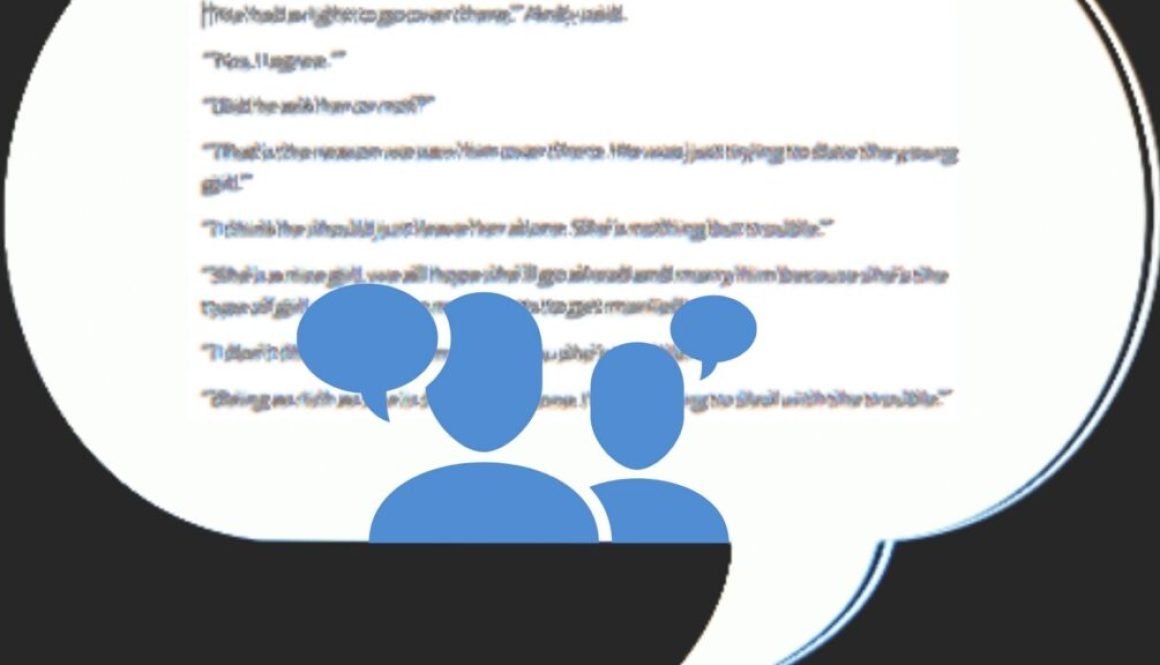Learn How to Write Dialogue from Examples
Dialogue refers to conversation between two or more characters and fabricating such conversations is an art. That’s why it’s possible to learn how to write dialogue from examples. One thing is sure, the best examples come from successful authors who have perfected the art of writing dialogue.
In this post, we’re going to review some dialogue written by three different authors. The first example is from Hills Like White Elephants’, by Hemingway. It’s a notable example because it’s 90% dialogue.
The second example comes from Of Mice and Men, by John Steinbeck. He was expert at portraying the common man and his dialogue makes the reader feel as though they’re in the room with the characters. Whereas Hemingway sometimes sounds stiff and forced, Steinbeck is natural and down to earth.

The third and final dialogue example is from Adventures of Huckleberry Finn, by Mark Twain. He’s somewhat of my writing idol. Not because of his famous books but because of his ability to tell a story, twist words, insert humor and the way he makes words dance. No one is a Twain.
For example, this sentence from The Celebrated Jumping Frog of Calaveras County:
“Simon Wheeler backed me into a corner and blockaded me there with his chair… He never smiled, he never frowned, he never changed his voice[…].”
If you remove the ‘there‘ the rhythm is lost.
“Simon Wheeler backed me into a corner and blockaded me…with his chair…”
It’s just not the same. That bounce you get from the ‘there’ is gone. The ‘there’ in there is no accident. The next sentence, on the other hand, is like a song. It’s just so very good. Okay, okay, this thing is about dialogue.
Learn How to Write Dialogue from Hemingway
For our first example, we’ll drop right into the story where the dialogue begins.
Excerpt from Hills Like White Elephants’
The American and the girl with him sat at a table in the shade, outside the building. It was very hot and the express from Barcelona would come in forty minutes. It stopped at this junction for two minutes and went on to Madrid.
“What should we drink?” the girl asked. She had taken off her hat and put it on the table.
“It’s pretty hot,” the man said.
“Let’s drink beer.”
“Dos cervezas,” the man said into the curtain.
“Big ones?” a woman asked from the doorway.
“Yes. Two big ones.”
The woman brought two glasses of beer and two felt pads. She put the felt pads and the beer glasses on the table and looked at the man and the girl. The girl was looking off at the line of hills. They were white in the sun and the country was brown and dry.
“They look like white elephants,” she said.
“I’ve never seen one,” the man drank his beer.
“No, you wouldn’t have.”
“I might have,” the man said. “Just because you say I wouldn’t have doesn’t prove anything.”
The girl looked at the bead curtain. “They’ve painted something on it,” she said. “What does it say?”
“Anis del Toro. It’s a drink.”
“Could we try it?”
This dialogue is clean and crisp and it moves right along. It’s modern and well-formed because it was Hemingway who changed the modern style of writing. We take for granted the focus on nouns, verbs and short punchy sentences, not only because we’re use to it and it seems right but also because it was Hemingway himself who set the style.
So what can you learn from his dialogue?
-
- Use this as an example of well-formed dialogue. It shows almost every scenario needed to construct perfect dialog.
- Notice how the syntax and the tags work.
- Notice how tags can interrupt the flow. Today, writers use far fewer—he said, she saids.
- Notice the absence of filler or transition words. This makes it sound natural.
- Study how he handled dialogue between more than three characters.
Learn How to Write Dialogue from Steinbeck
Now, for one of my very favorite authors, solely based on how he captures the spirit of people.
Excerpt from Of Mice and Men
Lennie dipped his whole head under, hat and all, and then he sat up on the bank and his hat dripped down on his blue coat and ran down his back. “That’s good,” he said. “You drink some, George. You take a good big drink.” He smiled happily. George unslung his bindle and dropped it gently on the bank. “I ain’t sure it’s good water,” he said. “Looks kinda scummy.” Lennie dabbled his big paw in the water and wiggled his fingers so the water arose in little splashes; rings widened across the pool to the other side and came back again. Lennie watched them go. “Look, George. Look what I done.”
George knelt beside the pool and drank from his hand with quick scoops. “Tastes all right,” he admitted. “Don’t really seem to be running, though. You never oughta drink water when it ain’t running, Lennie,” he said hopelessly. “You’d drink out of a gutter if you was thirsty.” He threw a scoop of water into his face and rubbed it about with his hand, under his chin and around the back of his neck. Then he replaced his hat, pushed himself back from the river, drew up his knees, and embraced them.
The reader can see every bit of the setting, even sense impending doom. The way George says, “You’d drink out of a gutter if you was thirsty.” gives us cause to speculate Lenny doesn’t have common sense. But you can also sense the closeness between these two fellas.
Learning lessons from this dialogue:
-
- How to work setting into dialogue. This setting in this example is tightly integrated into the conversation, which adds to the realism.
- How to make dialog apart of the action. This scene moves. There is no way to escape where they are and what they’re doing and how they’re connected.
- How to expand on character. These sentences without the author spelling it out show that George, for some unknown reason, looks out for Lenny.
- Study how he effortlessly maintained his narrative style even when the characters spoke. It’s less common to have dialog integrated like this, but when done well it really works. Hawthorne was good at this too. Check out The Scarlet Letter, by Nathaniel Hawthorne
Now on to my hero…
Learn How to Write Dialogue from Mark Twain
There is something about Mark Twain that escapes explanation. The man could see. And he could write every detail, to make the reader see it too. Yet, he didn’t just slather the page with words. He gave those words a tune, and America sang right along with him. The world did too.

Excerpt from Adventures of Huckleberry Finn
I was most ready to cry; but all at once I thought of a way, and so I offered them Miss Watson—they could kill her. Everybody said:
“Oh, she’ll do. That’s all right. Huck can come in.”
Then they all stuck a pin in their fingers to get blood to sign with, and I made my mark on the paper.
“Now,” says Ben Rogers, “what’s the line of business of this Gang?”
“Nothing only robbery and murder,” Tom said.
“But who are we going to rob?—houses, or cattle, or—”
“Stuff! stealing cattle and such things ain’t robbery; it’s burglary,” says Tom Sawyer. “We ain’t burglars. That ain’t no sort of style. We are highwaymen. We stop stages and carriages on the road, with masks on, and kill the people and take their watches and money.”
“Must we always kill the people?”
“Oh, certainly. It’s best. Some authorities think different, but mostly it’s considered best to kill them—except some that you bring to the cave here, and keep them till they’re ransomed.”
“Ransomed? What’s that?”
“I don’t know. But that’s what they do. I’ve seen it in books; and so of course that’s what we’ve got to do.”
“But how can we do it if we don’t know what it is?”
When I read Adventures of Huckleberry Finn, neither my life experience nor my environment connected me to the characters or setting. I didn’t live in those times, had never floated down a river or lived in the south. Twain had been dead for 70 years, American life had dramatically changed and I had never been to Mississippi. Even so, Huck Finn and Tom Sawyer became real to me. I dreamt of them. At night, I had my own adventures while I slept. Doing all those adventures in my sleep was like writing my own story.
Alright, back to dialog.
So what’s to learn from Mark Twain’s Dialogue?
Um, everything! I’ll admit it, I’m biased. But here’s a list:
-
- He uses setting.
- His characters sound natural.
- You feel right in the middle of it. Hanging on to everything the characters say. He does what Gardner calls the first rule of writing. Twain, keeps you in the story. Okay, that’s possibly not about dialogue. But it so is at the same time.
- Learn syntax.
- Study how to keep it simple.
- See how to handle multiple characters.
Alright, I’m stopping there. I could go on with Twain all day. If you know me, you’re saying, “Could?”





